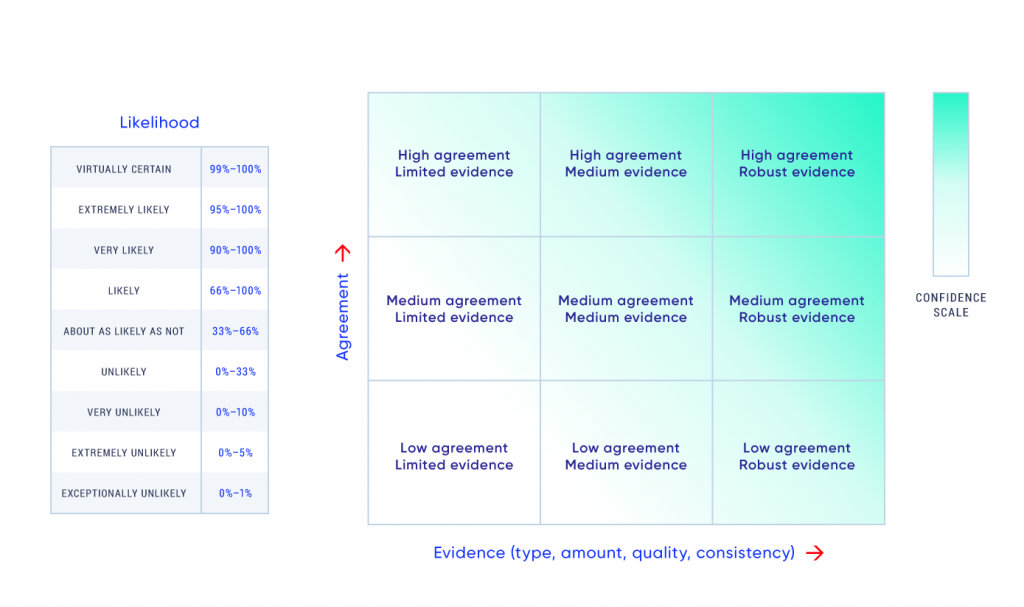1.1
Introduction
Climate change is one of the defining challenges of the 21st century. It is a global problem, and tackling it requires global action. Governments around the world have committed to work together to limit global warming, recognizing that climate-related risks grow with the magnitude of warming and associated changes in climate. The Paris Agreement under the United Nations Framework Convention on Climate Change, which entered into force on November 4, 2016,1 established a goal of holding the increase in global temperature to 1.5°C–2°C above pre-industrial levels, as well as a commitment to engage in adaptation planning and implementation. Collective action in pursuit of the global temperature goal is being implemented; however, it is recognized that this goal will only reduce and not eliminate the risks and impacts of climate change. Governments and citizens need to understand how climate change might impact them, in order to plan and prepare for the challenges that climate change brings.
Understanding climate change and its consequences draws from the physical, biological, and social sciences. Ongoing research in these fields is leading to an ever-growing body of published scientific literature related to climate change. Assessing this growing knowledge base, and communicating how understanding of climate change has grown, is challenging, especially as there is a wide audience for this information. The impacts of climate change are a concern for individuals, communities, business sectors, and governments, from local and regional to national and international scales. “Science assessments” provide a way to critically analyze and synthesize existing knowledge on a topic, including an evaluation of confidence in our understanding and of remaining uncertainties. In so doing, science assessments can serve as a source of robust information for answering the questions and concerns of a wide audience. Global-scale scientific assessments of climate change have been conducted by the Intergovernmental Panel on Climate Change (IPCC) (see Box 1.1) regularly since 1990 and have been pivotal in providing the global community with a knowledge base to inform decision-making. National-scale climate change science assessments speak more directly to national audiences.
Over the past two decades, Canada has produced three broad, national climate change assessments (Maxwell et al., 19977; Lemmen et al., 20085; Warren and Lemmen, 201410), as well as sector- or region-specific assessments on human health (Séguin, 20089), transportation (Palko and Lemmen, 20178), and marine coasts (Lemmen et al., 20164). These reports communicated to Canadians the risks and opportunities climate change presents and focused on assessing our readiness to adapt to potential impacts. National climate change assessments help citizens and stakeholders become better informed and engage in discussions about how to respond to the challenges of climate change in Canada through both mitigation and adaptation (see Box 1.2). While all of these assessments included high-level overviews of observed and projected changes in Canada’s climate, only one report had a full chapter dedicated to changes in physical climate (Bush et al., 20141).
The current National Assessment, Canada in a Changing Climate: Advancing our Knowledge for Action, was launched in 2017 (https://www.nrcan.gc.ca/environment/impacts-adaptation/19918). As part of this process, a more comprehensive assessment of changes in Canada’s climate has been carried out than in past assessments. The assessment as a whole will examine how Canada’s climate is changing, the impacts of these changes, and how we are adapting to reduce risk. A series of authoritative reports will be completed between 2018 and 2021 as part of the National Assessment process. Canada’s Changing Climate Report (CCCR) is the first major product of the current National Assessment, and it focuses on answering the questions: how has Canada’s climate changed to date, why, and what changes are projected for the future? A National Issues report will focus on climate change impacts and adaptation issues that are of national importance or that would benefit from an integrated, cross-Canada perspective. A Regional Perspectives report will provide a picture of climate change impacts and adaptation in six regions of Canada. Health of Canadians in a Changing Climate will provide an assessment of the risks of climate change to the health of Canadians and to the health care system. An Enhanced Synthesis will be produced in 2021.
Climate change is a global phenomenon, and Canada’s national climate change assessments build on a foundation provided by the global-scale science assessments of the IPCC, which have been produced every five to seven years since 1990. These assessments are widely recognized as the most authoritative reference documents on the state of knowledge on climate change, its potential consequences, and response options. Conclusions of successive IPCC assessments are considered to represent the most recent consensus of the international science community, based on publicly available knowledge up to that time. In this report, the most recent (Fifth) IPCC assessment (IPCC, 20132) is referred to heavily, especially in Chapters 2 and 3, which provide a synopsis of observed and future global-scale climate changes (see Section 1.4). A Sixth IPCC Assessment is currently underway, and a series of assessment reports will be released from October 2018 to spring 2022 (http://www.ipcc.ch/). A large volume of scientific papers have been published since the body of literature assessed in the IPCC Fifth Assessment. This report does not comprehensively assess this new literature, as doing so would duplicate the IPCC process. Rather, this report focuses on assessing new literature that advances understanding of climate change in Canada.

